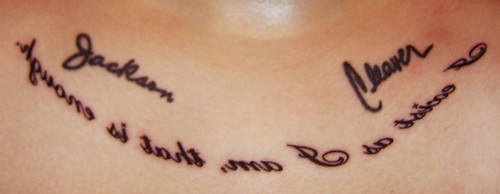“…a newer medium takes place of an older one, borrowing and reorganizing the characteristics of writing in the older medium and reforming its cultural space.” (Bolter, 2001, p. 23)
Bolter’s (2005) definition of remediation struck me a bit like a Eureka! moment as I sat at lunch in the school staffroom, overhearing a rather fervent conversation between a couple of teachers, regarding how computers are destroying our children. They noted how their students cannot form their letters properly, and can barely print, not to mention write in cursive that is somewhat legible. The discussion became increasingly heated as one described how children could not read as well because of the advent of graphic novels, and her colleague gave an anecdote about her students’ lack of ability to edit. When the bell rang to signal the end of lunch, out came the conclusion—students now are less intelligent because they are reading and writing less, and in so doing are communicating less effectively.
In essence, my colleagues were discussing what we are losing in terms of print—forming of letters, handwriting— the physicality of writing. However, I wonder how much of an impact that makes on the world today, and 20 years from now when the aforementioned children become immersed in, and begin to affect society. Judging from the current trend, in 20 years time, it is possible that most people will have access to some sort of keypad that makes the act of holding a pen obsolete. Yes, it is sad, because calligraphy is an art form in itself, yet it strikes me that having these tools allow us the time and brain power to do other things. Take for example graphic novels. While some graphic novels are heavily image-based, there are many that have a more balanced text-image ratio. In reading the latter, students are still reading text, and the images help them understand the story. By making comprehension easier, students have the time and can focus brain processes to create deeper understanding such as making connections with personal experiences, other texts or other forms of multimedia.
As for the communications bit, Web 2.0 is anything but antisocial. Everything from blogs, forums, Twitter, to YouTube all have social aspects to them. People are allowed to rate, tag, bookmark and leave comments. Everything including software, data feeds, music and videos can be remixed or mashed-up with other media. In academia, writing articles was previously a more isolated activity, but with the advent of forums like arxiv.org, scholarly articles could be posted, improved much more efficiently and effectively compared to the formal process that occurs when an article is sent in to a journal. More importantly, scholarly knowledge is disseminated with greater ease and accuracy.
Corporations and educational institutions are beginning to see a large influx of, and reception for Interactive White Boards (IWB). Its large monitor, computer and internet-linked, touch-screen abilities make it the epitome of presentation tools. Content can be presented every which way—written text, word processed text, websites, music, video, all (literally) at the user’s fingertips. The IWB’s capabilities allow for a new form of writing to occur—previously, writing was either with a writing instrument held in one’s hand, or via typing on a keyboard. IWBs afford both processes to occur simultaneously, alternately, and interchangeably. If one so chooses, the individual can type and write at the same time! IWBs are particularly relevant to remediation of education and pedagogy itself, because the tool demands a certain level of engagement and interaction. A lesson on the difference between common and proper nouns that previously involved the teacher reading sentences and writing them on the board, then asking students to identify them—could now potentially involve the students finding a text of interest, having it on the IWB, then students identifying the two types of nouns by directly marking up the text with the pen or highlighter tools.
Effectively, the digital world is remediating our previous notion of text in the sense of books and print. Writing—its organization, format, and role in culture is being completely refashioned.
References
Bolter, J. D. (2001). Writing Space: Computers, Hypertext, and the Remediation of Print (2 ed.). Mahwah, NJ: Lawrence Erlbaum.







